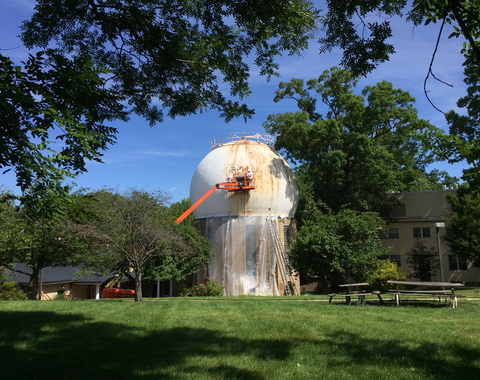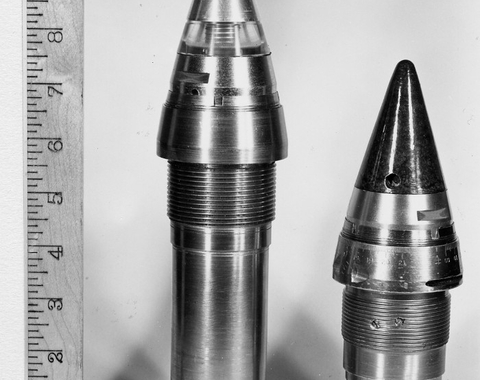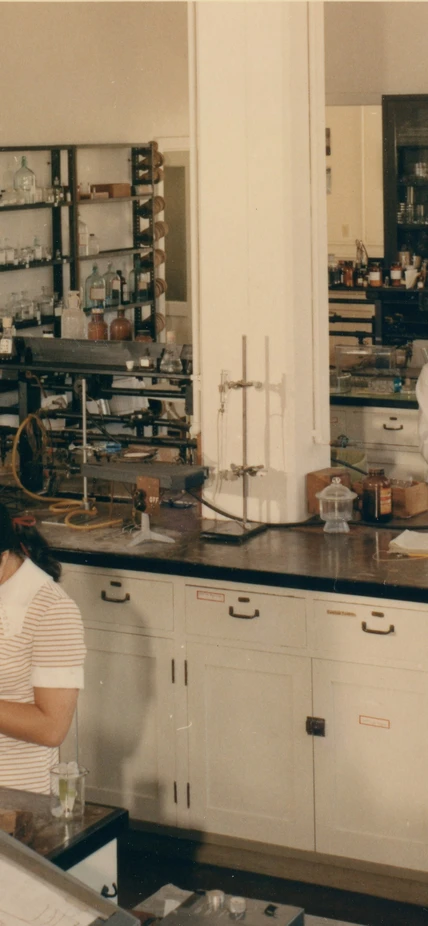Written by Richard Carlson, Janice Dunlap, and Shaun Hardy
The most iconic building on campus is the Atomic Physics Observatory (APO), a ~ 55-foot tall Art Deco structure that houses a defunct 3-million volt particle accelerator used for various studies in nuclear physics. Like a snow globe in the bright sun, the now shiny-white dome acts as a rear-view mirror; a representative of the breadth and depth of our campus' rich scientific past.
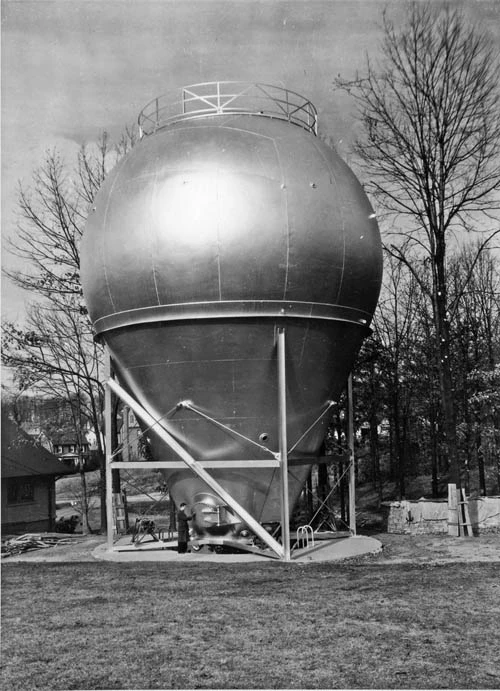
Designed by Van De Graaff himself
In 1931, Carnegie's atomic physics team, which then consisted of Merle Tuve, Lawrence Hafstad, and Odd Dahl, learned of Robert Van de Graaff’s new electrostatic generator and arranged for Van de Graaff to visit our campus to study the potential of the generator to work as a high-voltage accelerator. The Experiment Building (now known as the Greenewalt Building) was expanded to house a million-volt generator. The APO was then built in 1938 to house a Van de Graaff inside a large pressure tank, which would permit even higher voltages.
Splitting the atom
Neighbors call it the "Atom Smasher" for good reason!
The high-voltage equipment on campus was utilized for multiple significant experiments in atomic and nuclear physics. However, the most celebrated of these was a demonstration of uranium fission in the APO on January 28, 1939—among the first in the United States and one conducted just six weeks after the discovery of fission by German scientists. As it happens, Niels Bohr, Enrico Fermi, and other attendees of the Washington Conference on Theoretical Physics were present to witness this historic event.
The experiment, disintegrating uranium into barium, was conducted by four separate teams of physicists across the United States—at Carnegie Institution in Washington, DC; Columbia University in New York; Johns Hopkins in Baltimore; and the University of California, Berkeley.
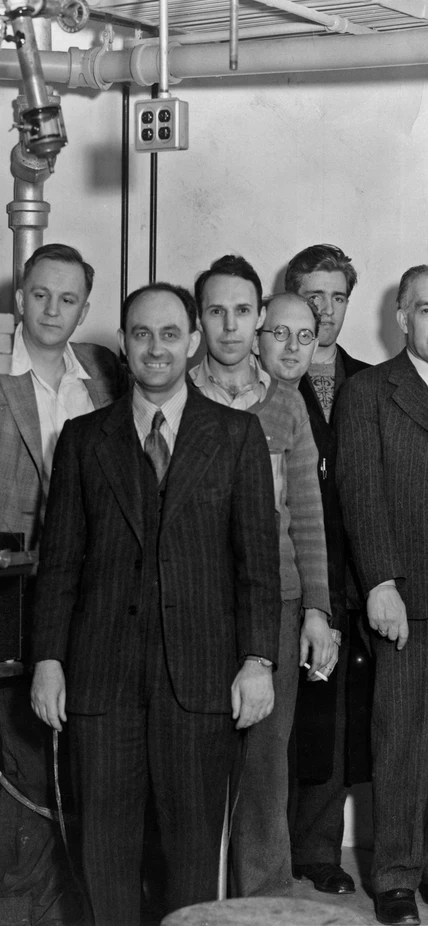
Fission demonstrated at the APO on 28 January 1939. Two days earlier news of fission became public knowledge at the Fifth Washington Conference on Theoretical Physics sponsored jointly by the Carnegie Institution and George Washington University. The experiment demonstrated it as a nuclear as well as a radio-chemical phenomenon. Left to right Robert Meyer, Merle Tuve, Enrico Fermi, Richard Roberts, Leon Rosenfeld, Erik Bohr, Niels Bohr, Gregory Breit and John Fleming. The experiment was set up by Roberts, Hafstad and Meyer. Credit: Carnegie Science Archives.
Leon Rosenfeld described this moment in an oral history interview for the American Institute of Physics: “I still remember going to Washington. [Merle A.] Tuve was quite excited because he had produced some fission; he had a Van de Graaff and an oscillograph and so he produced those fission bursts. The Van de Graaff was then at the Institute [i.e., Department] of Terrestrial Magnetism, of all places, and we went there in the evening."
No longer smashing
After a successful second career as a polarized ion source in the ‘60s and early ‘70s, the pressure tank Van de Graaff was shut down for good in 1975. Now, the historic building is used for storage. You can visit the building on our campus to this day!
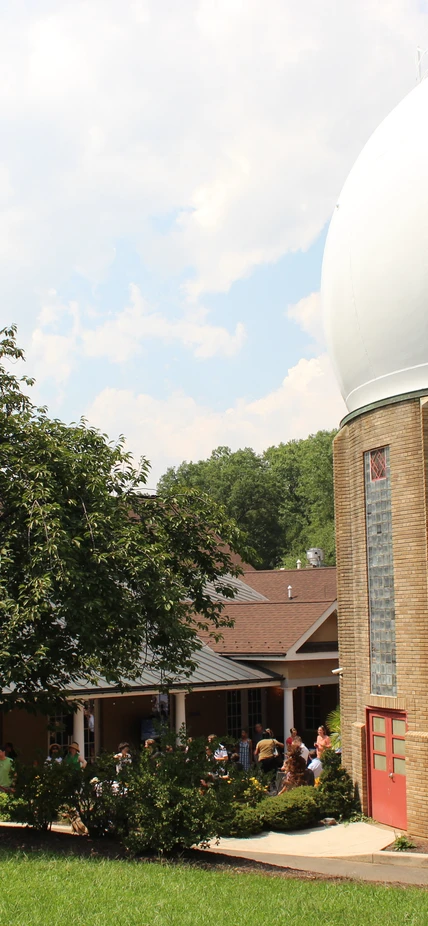
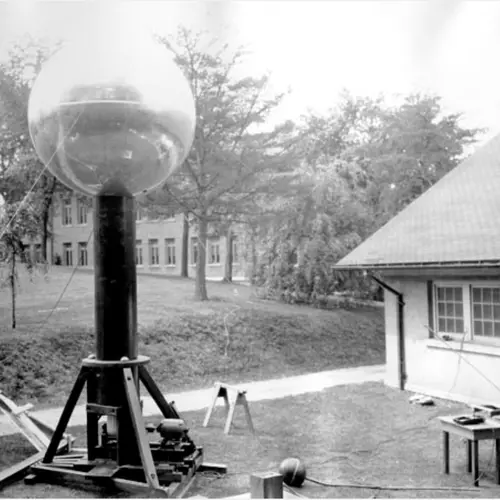
Observing Earth and Atom
Preserved in our archives is a rich visual legacy of EPL's first fifty years: a collection of five thousand historic photographs of instruments and apparatus used in geophysics, atomic physics, and astronomy—incluting the Atomic Physics Observatory. Together with supporting field and laboratory documentation in the archives, these images provide an exceptional resource for the study of early 20th Century science.
The online exhibit Observing Earth and Atom presents some outstanding examples from the photograph collection.
Explore the collection
